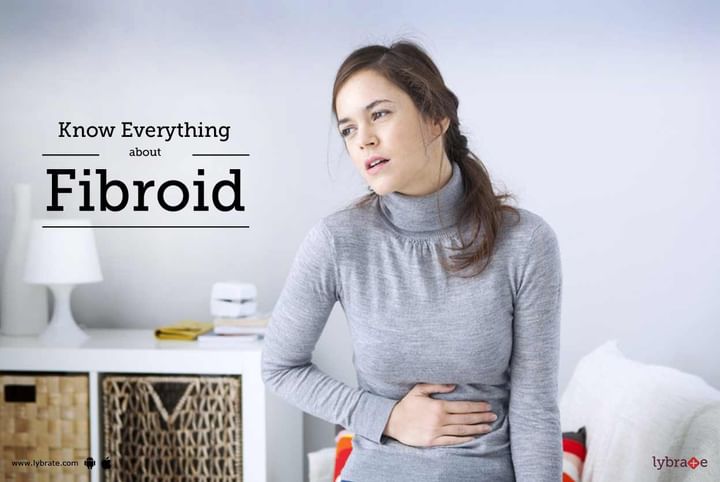Know Everything About Fibroid
Fibroids are the most frequently seen tumors of the female reproductive system. Fibroids, also known as uterine myomas, leiomyomas, or fibromas, are firm, compact tumors that are made of smooth muscle cells and fibrous connective tissue that develop in the uterus. It is estimated that between 20 to 50 percent of women of reproductive age have fibroids, although not all are diagnosed. Some estimates state that only about one-third of these fibroids are large enough to be detected by a doctor during a physical examination.
In more than 99 percent of fibroid cases, the tumors are benign (non-cancerous). These tumors are not associated with cancer and do not increase a woman's risk for uterine cancer. They may range in size, from the size of a pea to the size of a softball or small grapefruit.
Causes: While it is not clearly known what causes fibroids, it is believed that each tumor develops from an aberrant muscle cell in the uterus, which multiplies rapidly because of the influence of estrogen.
Risk Factors:
- Age: Women who are approaching menopause are at the greatest risk for fibroids because of their long exposure to high levels of estrogen.
- Obesity
- Race: African-American heritage also seems to be at an increased risk, although the reasons for this are not clearly understood.
- Parity: Some studies, of small numbers of women, have indicated that women who have had two liveborn children have one-half the risk of developing uterine fibroids compared to women who have had no children. Scientists are not sure whether having children actually protected women from fibroids or whether fibroids were a factor in infertility in women who had no children.
Symptoms:
Some women who have fibroids have no symptoms, or have only mild symptoms, while other women have more severe, disruptive symptoms. The following are the most common symptoms for uterine fibroids:
-
Heavy or prolonged menstrual periods
-
Abnormal bleeding between menstrual periods
-
Pelvic pain (caused as the tumor presses on pelvic organs)
-
Low back pain
-
Pain during intercourse
-
A firm mass, often located near the middle of the pelvis, which can be felt by the doctor on examination
In some cases, the heavy or prolonged menstrual periods, or the abnormal bleeding between periods, can lead to iron-deficiency anemia, which also requires treatment.
Diagnosis: Fibroids are most often found during a routine pelvic examination. This, along with an abdominal examination, may indicate a firm, irregular pelvic mass to the physician. In addition to a complete medical history and physical and pelvic and/or abdominal examination, diagnostic procedures for uterine fibroids may include:
-
Transvaginal ultrasound (also called ultrasonography). An ultrasound test using a small instrument called a transducer, that is placed in the vagina.
-
Magnetic resonance imaging (MRI). A non-invasive procedure that produces a two-dimensional view of an internal organ or structure.
-
Hysterosalpingography. X-ray examination of the uterus and fallopian tubes that use dye and is often performed to rule out tubal obstruction.
-
Hysteroscopy. Visual examination of the canal of the cervix and the interior of the uterus using a viewing instrument (hysteroscope) inserted through the vagina.
-
Blood test (to check for iron-deficiency anemia if heavy bleeding is caused by the tumor).
Treatment: Since most fibroids stop growing or may even shrink as a woman approaches menopause, the doctor may simply suggest "watchful waiting." With this approach, the doctor monitors the woman's symptoms carefully to ensure that there are no significant changes or developments and that the fibroids are not growing.
In women whose fibroids are large or are causing significant symptoms, treatment may be necessary. Treatment will be determined by the doctor based on:
-
Your overall health and medical history
-
Extent of the disease
-
Your tolerance for specific medications, procedures, or therapies
-
Expectations for the course of the disease
-
Your opinion or preference
-
Your desire for pregnancy
In general, treatment for fibroids may include:
-
Hysterectomy. Hysterectomies involve the surgical removal of the entire uterus.
-
Conservative surgical therapy. Conservative surgical therapy uses a procedure called a myomectomy. With this approach, physicians will remove the fibroids, but leave the uterus intact to enable a future pregnancy.
-
Gonadotropin-releasing hormone agonists (GnRH agonists). This approach lowers levels of estrogen and triggers a "medical menopause." Sometimes GnRH agonists are used to shrink the fibroid, making surgical treatment easier.
-
Anti-hormonal agents. Certain drugs oppose estrogen (such as progestin and Danazol), and appear effective in treating fibroids. Anti-progestins, which block the action of progesterone, are also sometimes used.
-
Uterine artery embolization. Also called uterine fibroid embolization, uterine artery embolization (UAE) is a newer minimally-invasive (without a large abdominal incision) technique. The arteries supplying blood to the fibroids are identified, then embolized (blocked off). The embolization cuts off the blood supply to the fibroids, thus shrinking them. Health care providers continue to evaluate the long-term implications of this procedure on fertility and regrowth of the fibroid tissue.
-
Anti-inflammatory painkillers. This type of drug is often effective for women who experience occasional pelvic pain or discomfort. In case you have a concern or query you can always consult an expert & get answers to your questions!



+1.svg)
